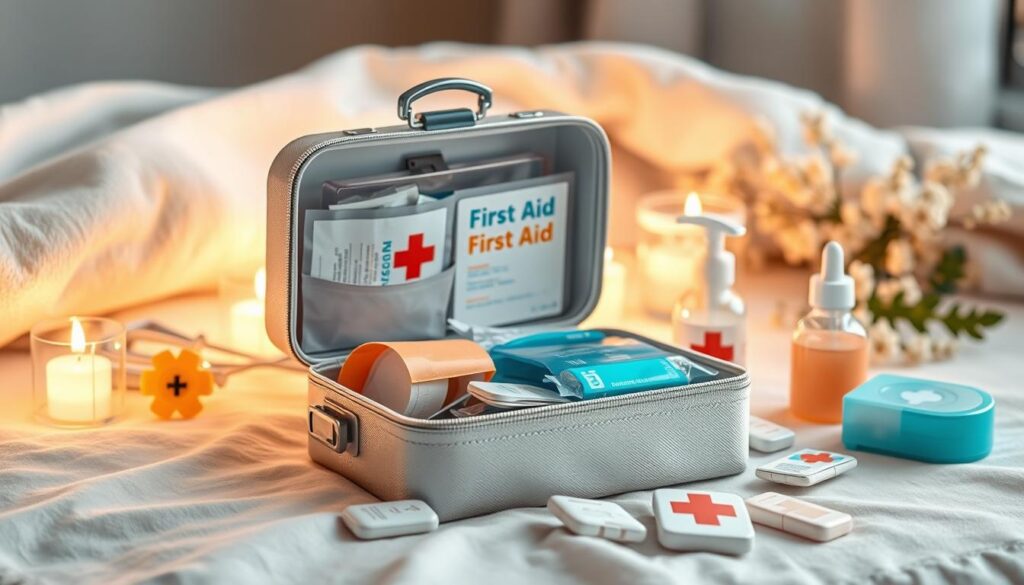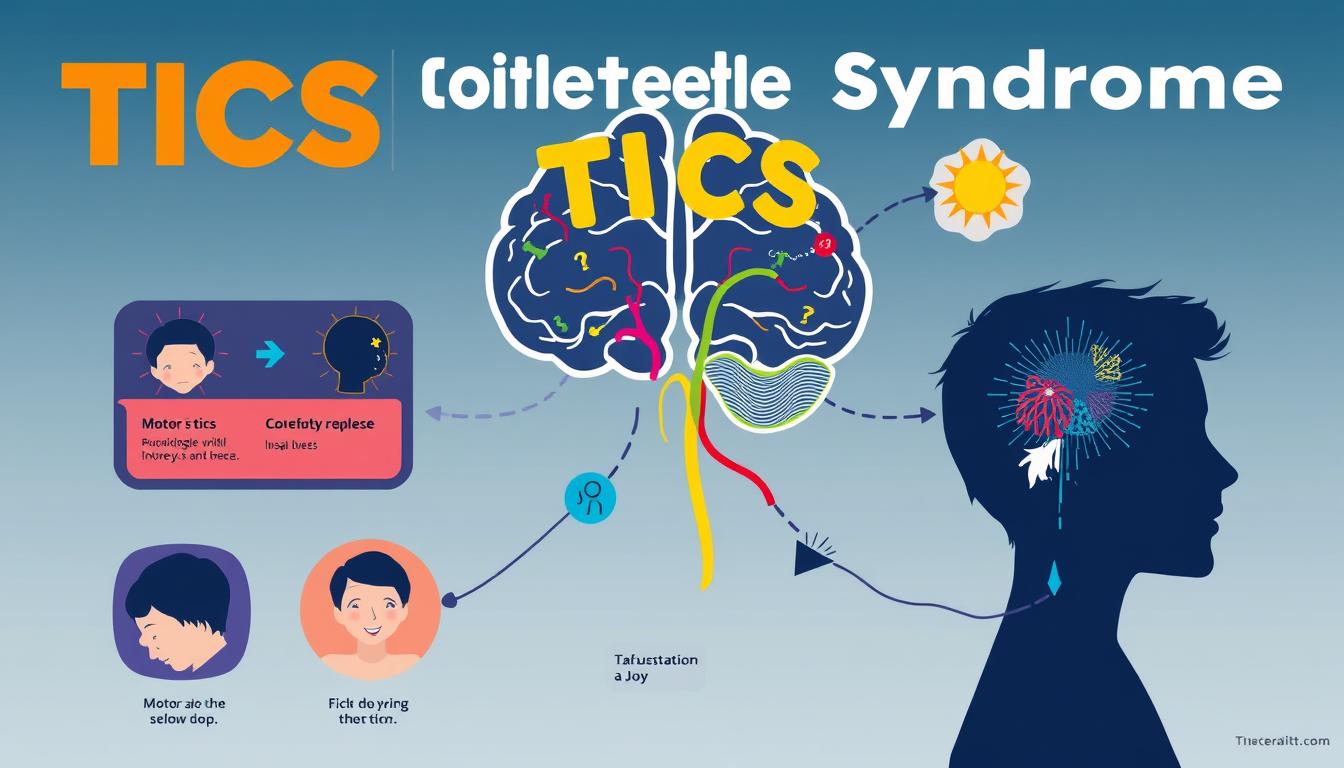Adolescent mental health is a big challenge today. Self-harm among teens is a growing problem that needs our quick action and understanding. These behaviors can deeply affect young people and their families.
Understanding and preventing self-harm are important steps. Our studies show many teens face emotional pain that leads to harmful actions. By supporting them and spotting early signs, we can help them better handle their mental health.
In the U.S., there’s been a big increase in teen self-harm. This shows we need more mental health help and education. We aim to give insights that help parents, teachers, and doctors support teens when they need it most.
Key Takeaways
- Self-harm is a complex mental health issue affecting teenagers nationwide
- Early recognition and intervention are key for teen mental health
- Compassionate communication can make a big difference
- Professional support is vital in dealing with self-harm behaviors
- Creating safe, non-judgmental spaces helps teens feel supported
Understanding Self-Harm: What Parents and Educators Need to Know
Teenage self-injury is a complex and sensitive issue. It needs careful understanding and a compassionate approach. Many adults find it hard to understand why teens might harm themselves. This makes education and awareness very important for support.
Self-harm risk factors can show up in many ways. It’s key to recognize the emotional challenges teens face. Knowing this helps create a supportive space for vulnerable teens.
Common Forms of Self-Injury
- Cutting or scratching the skin
- Burning
- Hitting or punching oneself
- Intentional bruising
- Hair pulling
Misconceptions About Self-Harm
| Misconception | Reality |
|---|---|
| Self-harm is attention-seeking behavior | It’s a serious coping mechanism for emotional pain |
| Only certain types of teens self-harm | Self-injury can affect adolescents from all backgrounds |
Warning Signs to Watch For
- Unexplained wounds or scars
- Wearing long sleeves in warm weather
- Frequent accidents or injuries
- Emotional withdrawal
- Sudden changes in behavior
“Understanding is the first step toward compassionate intervention.” – Mental Health Professional
Spotting these signs early can greatly help support teens with self-injury. Patience, empathy, and professional help are essential. They guide teens through their emotional challenges.
The Rising Prevalence of Teenage Self-Injury in America
Teenage self-injury is a big problem in the U.S. Studies show more young people are hurting themselves. This calls for a deep understanding and action to help.
Recent studies show a big jump in self-harm among teens. Here are some key numbers:
- 17-35% of teens have hurt themselves on purpose
- Girls are more likely to hurt themselves than boys
- The first time most teens hurt themselves is between 12-14 years old
“The rise of teenage self-injury is not just a statistic, but a cry for help from our youth.” – Mental Health Research Institute
Experts say many things lead to this problem. Pressures of the digital age, social media, school stress, and growing emotions are big factors.
| Age Group | Self-Injury Prevalence | Primary Triggers |
|---|---|---|
| 12-14 years | 20% | Social Anxiety |
| 15-17 years | 35% | Academic Pressure |
Knowing these patterns helps parents, teachers, and mental health workers. They can create better ways to prevent and support teens facing mental health issues.
Identifying Risk Factors in Adolescent Self-Harm
It’s key to understand the complex world of self-harm risk factors to protect teen mental health. We’ve found many elements that lead to self-destructive actions in teens.
Teen mental health is complex and can lead to self-harm. Knowing these risk factors helps us all help teens better.
Environmental Triggers
Many environmental factors affect teen self-harm risks:
- Unstable family environments
- Academic pressure
- Socioeconomic challenges
- Bullying or social isolation
Psychological Factors
Internal psychological challenges also play a big role in self-harm risk factors:
- Undiagnosed depression
- Anxiety disorders
- Low self-esteem
- Unresolved trauma
Social Media Influence
Digital platforms have a big impact on teen mental health through:
| Platform Impact | Potential Risks |
|---|---|
| Cyberbullying | Increased emotional distress |
| Comparison culture | Reduced self-worth |
| Negative content exposure | Potential self-harm ideation |
*Understanding these risk factors is the first step toward prevention and healing.*
By tackling these complex self-harm risk factors, we can build supportive environments. These environments focus on teen mental health and emotional well-being.
Self-Harm in Adolescents: Understanding and Prevention

Dealing with self-harm needs a full plan that includes understanding and stopping it. Our communities are key in helping teens with mental health issues.
“Prevention is not about eliminating the problem, but creating supportive environments where teens feel heard and valued.” – Mental Health Expert
Good self-harm prevention programs cover many areas of teen mental health. They usually include:
- Early mental health screening
- Educational workshops
- Peer support networks
- Crisis intervention resources
Knowing why teens hurt themselves helps us make better prevention plans. By spotting emotional triggers and giving the right support, we can teach teens better ways to cope.
| Prevention Strategy | Key Components | Impact |
|---|---|---|
| School-Based Programs | Mental health education | Increased awareness |
| Community Initiatives | Support groups | Reduced isolation |
| Digital Resources | Online counseling | Accessible support |
Our way to stop self-harm must be all-encompassing, caring, and forward-thinking. By making safe places for talking and using proven methods, we can guide teens through their tough times.
Creating Safe Spaces for Communication
Talking to teens about self-harm needs care, patience, and understanding. It’s about making a space where they can share their feelings freely. They should feel safe from judgment or criticism.
Building Trust with Teens
Trust is key in counseling teens. They must feel they can talk about their problems without shame or punishment. Here are some ways to build trust:
- Stay calm and don’t react too quickly
- Don’t lecture or try to solve problems right away
- Show you really care and are there for them
- Respect their privacy and personal space
Active Listening Techniques
“Listening is about being present, not perfect.” – Unknown
Good listening is more than just hearing. It’s about fully understanding and engaging. Parents can use these techniques:
- Keep eye contact
- Repeat back what you’ve heard
- Ask questions that encourage more talking
- Accept and validate their feelings
When and How to Intervene
It’s important to know when to step in. If you think a teen might be self-harming, talk to them with kindness. Get help if you see:
- Often or serious injuries
- They seem very withdrawn
- They talk about wanting to die
- They can’t do everyday things anymore
Supporting teens with self-harm is about creating a loving, judgment-free space. It’s where they feel heard and supported.
Essential First Aid and Emergency Response
When a self-harm incident happens, it’s important to act quickly and with care. First aid for self-harm is key to keeping a teenager safe and emotionally stable. Our guide offers important steps for parents and caregivers to handle these situations.

First, focus on the physical care during a self-harm emergency. Here are key steps for parents to support their child:
- Stay calm and create a safe space
- Check how serious the injury is
- Use clean gauze or cloth to stop bleeding
- Clean the wound with mild antiseptic
- Use sterile bandages to cover the injury
“Your calm and supportive presence can make a significant difference in the healing process.” – Mental Health Professionals
If the injury needs medical help, follow these steps:
- Call emergency services for serious wounds
- Get professional medical help for infection risks
- Keep emotional support going during medical care
| Injury Type | Immediate Action | Medical Attention Required |
|---|---|---|
| Minor cuts | Clean and bandage | First aid kit treatment |
| Deep wounds | Apply pressure, stop bleeding | Immediate medical evaluation |
| Potential infection | Clean thoroughly | Professional medical assessment |
Emotional first aid is just as important. Listen without judging, acknowledge their feelings, and show you’re there for them. Getting help from a mental health expert can offer more support and help find the root of their emotional struggles.
Professional Treatment Options and Resources
Helping teenagers with mental health issues needs care, understanding, and the right support. Our guide looks at professional help for teens facing self-harm and emotional struggles.
Types of Therapy Available
Adolescent counseling uses many therapies to meet each teen’s needs. The best programs for stopping self-harm often include:
- Cognitive-Behavioral Therapy (CBT)
- Dialectical Behavior Therapy (DBT)
- Family Systems Therapy
- Group Counseling
- Art and Expressive Therapies
Finding the Right Mental Health Provider
Finding the right therapist is key for good treatment. Look for these important qualities in a therapist:
| Consideration | Important Criteria |
|---|---|
| Specialization | Experience with adolescent mental health |
| Approach | Compassionate and youth-focused treatment |
| Credentials | Licensed clinical psychologist or counselor |
Insurance and Accessibility
Getting mental health help can be hard. Many programs offer:
- Sliding scale fees
- Telehealth options
- School-based counseling services
- Community mental health centers
“Early intervention and compassionate support can transform an adolescent’s mental health journey.” – National Mental Health Association
We aim to give families the tools and resources to help teens through tough times. Remember, asking for help is brave, not weak.
The Role of Schools in Prevention and Support

Schools are key in tackling teen mental health and stopping self-harm. They are in a great spot to start big changes in students’ lives. This is through detailed school programs aimed at self-harm prevention.
Good self-harm prevention needs many steps. Important actions include:
- Mental health awareness training for staff
- Early spotting of students at risk
- Building supportive classroom settings
- Setting up peer support groups
“Prevention is not just about stopping harmful behaviors, but about creating spaces where students feel heard and supported.” – Mental Health Expert
School counselors are vital in spotting early signs and helping right away. They help connect students’ emotional issues with professional help. Our efforts must focus on building trust, giving resources, and making safe places to talk.
Creating strong self-harm prevention programs means:
- Regular mental health checks
- Workshops on managing stress
- Anti-bullying efforts
- Training on emotional strength
By putting mental health first, schools can be big helpers in stopping self-harm and helping students feel better.
Developing Healthy Coping Mechanisms
Understanding and managing emotions is key for teenagers. Self-harm coping strategies help them build resilience and control their feelings.
Adolescents face intense emotions that can be hard to handle. We aim to offer simple, effective ways to improve mental health and prevent self-destructive actions.
Alternative Stress Management Techniques
- Practice mindfulness meditation
- Engage in deep breathing exercises
- Create a daily journaling routine
- Use progressive muscle relaxation
“Learning to manage stress is not about eliminating emotions, but understanding them.” – Mental Health Expert
Building Emotional Resilience
Emotional resilience is a strong defense against mental health issues. By being kind to oneself and using positive self-talk, teens can grow stronger and more adaptable.
- Recognize and validate personal feelings
- Challenge negative thought patterns
- Develop a growth mindset
- Build a supportive social network
Positive Outlet Activities
Creative and physical activities are great for managing strong emotions. They offer healthy ways to express feelings and lower stress.
- Art therapy and creative expression
- Regular physical exercise
- Music and dance
- Volunteering and community engagement
By using these strategies, teens can improve their emotional control and mental health.
Supporting Parents and Family Members
Helping parents support their kids with self-harm needs care, understanding, and a plan. When a family finds out about self-injury, it can be tough. But, with the right support, teens can get better.
“The most powerful healing begins with unconditional love and open communication.” – Child Psychology Experts
Parents are key in stopping self-harm in teens. Our studies show important steps for families:
- Create a safe, non-judgmental space
- Learn to listen well
- Get help from experts
- Always be there emotionally
It’s important for families to be emotionally strong when helping a teen with self-harm. They need to be kind but also set limits. This keeps everyone’s mental health in check.
| Family Support Strategy | Key Actions |
|---|---|
| Communication | Regular check-ins, attentive listening |
| Professional Help | Family therapy, individual counseling |
| Self-Care | Support groups, personal mental health maintenance |
Remember, healing is a team effort that needs patience, understanding, and expert help.
Recovery Journey: Hope and Healing
Recovery from self-harm is a personal and changing journey. Our counseling for teens sees healing as a slow process of learning and growing. It’s about finding out who you are.
“Healing is not about erasing the past, but learning to embrace your strength and resilience.” – Mental Health Professional
Good ways to cope with self-harm include:
- Professional therapy and counseling
- Building emotional resilience
- Developing healthy communication skills
- Creating supportive social networks
We know recovery takes time, effort, and lots of support. Every teen’s path to healing is different. Progress is made in small, important steps.
| Recovery Stage | Key Strategies | Expected Outcomes |
|---|---|---|
| Initial Awareness | Identifying triggers | Self-understanding |
| Active Treatment | Therapy and skill building | Emotional regulation |
| Maintenance | Ongoing support | Long-term resilience |
Remember, recovery is possible. With the right help and dedication, teens can find better ways to cope. They can also improve their emotional health.
Conclusion
Our journey into understanding and preventing self-harm in teens shows how vital support is. We need a team effort from families, schools, and mental health experts. This teamwork is key to tackling adolescent mental health.
We’ve seen how teen emotional battles are complex. Early help can change lives. By making safe spaces for talk, learning signs, and teaching coping skills, we guide teens through tough times.
We’ve outlined ways to support teens at risk. It’s our duty to listen, offer help, and show constant support. Mental health in teens is a team effort, not just one person’s fight.
We must keep learning and sharing what we know. Groups like the National Alliance on Mental Illness (NAMI) and the American Psychological Association offer valuable advice. Together, we can build a place where teens feel supported and encouraged to ask for help.



